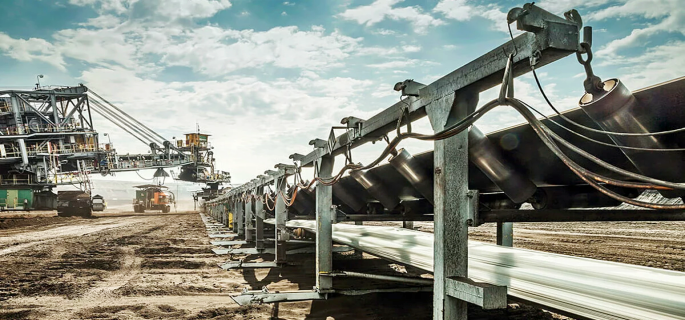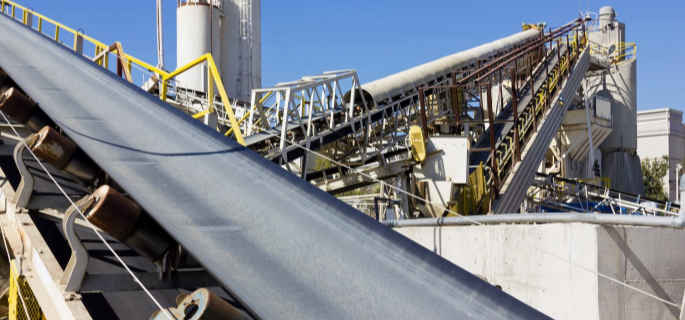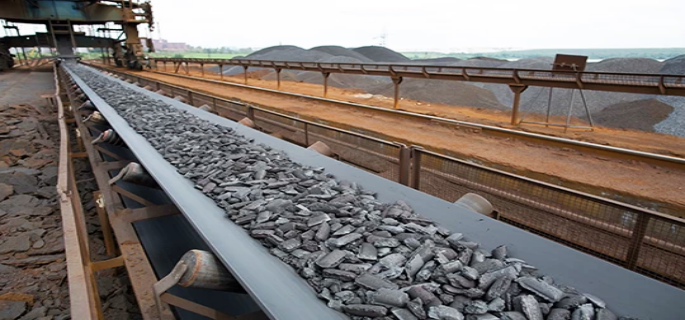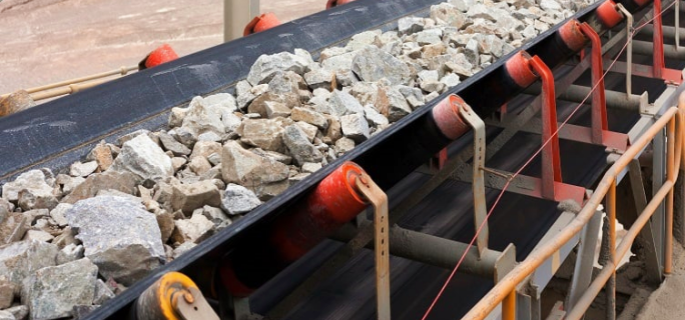Innovations in Engineering Science and Application Design for Belt
The field of engineering science and application design for belt conveyors is a critical area of study that bridges the gap between theoretical science and practical application in industrial environments. Belt conveyors are fundamental components in numerous industries, facilitating the efficient transport of bulk materials in settings such as mining, agriculture, and manufacturing. Understanding the intricate details of conveyor systems not only enhances efficiency but also improves safety and durability in these heavy-duty operations. This domain of engineering ensures that systems are not only designed and optimized for performance but also tailored to meet the specific needs of various industrial applications.
Overview of Ishwar Mulani’s Book on Engineering Science and Application Design for Belt Conveyors
Ishwar Mulani’s book, titled Engineering Science and Application Design for Belt Conveyors, serves as an essential resource for professionals in the field of conveyor system design. This comprehensive guide delves into the theoretical and practical aspects of designing belt conveyors, which are crucial for the efficient handling and transportation of materials in numerous industrial sectors.
Introduction to Engineering Science and Application Design for Belt Conveyors
The book begins with a thorough introduction to the basics of belt conveyor technology, including insights into Conveyor Belt Technology Arequipa. It covers fundamental concepts such as the mechanics of conveyor belts, types of belts available, and their material specifications. The introduction sets the stage for a deeper exploration into the customization and adaptation of these systems to meet specific operational requirements.
Significance of this Book in the Field of Conveyor Design
Engineering Science and Application Design for Belt Conveyors is highly regarded for its detailed analysis and practical solutions. It addresses critical engineering challenges faced by conveyor designers, including load support, belt alignment, and effective material discharge. These topics are discussed with an emphasis on optimizing the efficiency and longevity of conveyor systems.
The book’s impact on the field is significant, offering a blend of theoretical knowledge and practical insights. It provides engineers with the tools and information necessary to design more effective, reliable, and cost-efficient conveyor systems. As such, it is a vital reference for anyone involved in the design, operation, or maintenance of belt conveyors.
Ishwar Mulani’s authoritative text not only enriches the reader’s understanding of the engineering science and application design for belt conveyors but also enhances their ability to innovate and improve upon existing systems. The book stands out as a fundamental piece of literature in the evolving field of conveyor design and engineering.
Key Concepts Covered in the Book: Engineering Science and Application Design for Belt Conveyors
The book Engineering Science and Application Design for Belt Conveyors provides a comprehensive examination of the engineering principles and practical challenges involved in the design, implementation, and maintenance of belt conveyors. This section summarizes the key concepts addressed in the book.
Basic Principles of Conveyor Design
One of the core topics covered in this detailed study involves the fundamental principles of conveyor belt design. This includes:
- Conveyor Mechanics: Understanding how various components of a conveyor belt system—such as rollers, belts, and motors—work together to efficiently move materials.
- Material Considerations: Examining the properties of materials being transported and how these influence conveyor design. This encompasses aspects like weight, abrasiveness, stickiness, and whether the material is granular or lump.
- Belt Load: Calculating the maximum load that the conveyor belt must support over various points of the system, which influences the choice of belt width, motor power, and structural support.
- Speed and Throughput: Determining the optimal speed of the conveyor system to achieve desired throughput without compromising the stability and integrity of the cargo.
These principles form the foundation upon which more complex conveyor belt system designs are built, ensuring efficiency and reliability.
Discussion on the Engineering Challenges and Solutions for Belt Conveyors
Another significant aspect of the book focuses on the engineering challenges and solutions associated with belt conveyors. Key discussions include:
- Wear and Tear: Addressing the inevitable wear and tear that conveyor belts undergo due to continuous operation and material impact. The book explores materials and designs that enhance durability and extend the life of conveyor components.
- Energy Efficiency: Analyzing how energy efficiency can be optimized through conveyor design, including the use of energy-efficient motors and reducers, and techniques like regenerative braking systems.
- Environmental Impact: Considering how conveyor systems can be designed to minimize environmental impact, particularly in terms of noise, dust, and emissions. This includes the integration of features such as enclosures and dust suppression systems.
- Safety and Compliance: Ensuring that conveyor designs comply with national and international safety standards and regulations. Topics such as emergency stop mechanisms, guardrails, and maintenance protocols are thoroughly explored.
Each chapter of the book provides in-depth theoretical concepts supported by real-world examples and case studies, making Engineering Science and Application Design for Belt Conveyors a critical resource for anyone involved in the design, operation, or maintenance of conveyor systems. The book not only addresses the technical aspects of conveyor design but also considers practical issues that impact day-to-day operations.
Detailed Analysis of Belt Conveyor Components in Engineering Science and Application Design for Belt Conveyors
Ishwar Mulani’s book, “Engineering Science and Application Design for Belt Conveyors,” provides a meticulous analysis of the various components that make up belt conveyor systems. This section of the book is crucial for understanding the intricacies of each component’s function and its impact on the overall efficiency and reliability of the conveyor system. Here’s a breakdown of the key components discussed:

Belt Materials and Construction
One of the primary focus areas is the materials used for constructing conveyor belts. The book explores different types of belt materials including fabric, steel cord, and special composites, and discusses their applications, advantages, and limitations. This section also covers the significance of belt thickness and width in relation to the load and the type of material being transported.
Rollers and Idlers
The analysis includes detailed information about rollers and idlers, which are critical for supporting the belt and controlling its movement. It delves into various designs and materials used for rollers and explains how choosing the right idler type can reduce wear on the belt, decrease energy consumption, and minimize operational costs.
Drive Systems
Mulani’s book provides an in-depth look at the drive systems used in belt conveyors. This includes motors, gearboxes, and the drive arrangements necessary to maintain optimal tension and motion control of the belt. Different configurations of drive systems are evaluated, emphasizing their efficiency and suitability for different types of loads and operational conditions.
Pulleys
Pulleys play a vital role in the functioning of belt conveyors, and the book dedicates a significant portion to explaining their design and placement. Key topics include the selection of pulley diameter, the importance of proper lagging, and how pulleys influence the tracking and lifespan of the belt.
Control Systems
Control systems for belt conveyors are also thoroughly analyzed. The book discusses various control strategies that can be implemented to ensure safety, efficiency, and automation. It covers sensors and monitoring equipment that help in the prevention of potential failures and enhance the overall management of the conveyor system.
Safety Features and Accessories
Finally, the book addresses the critical safety features necessary for belt conveyors, including emergency stop systems, guards, and warning signs. Additionally, it explores various accessories such as skirtboards and scrapers that help in maintaining the cleanliness of the belt and ensure efficient operation of the system.
Through detailed analysis of these components, Ishwar Mulani’s “Engineering Science and Application Design for Belt Conveyors” provides a comprehensive guide that aids engineers and designers in building more robust, efficient, and safe conveyor systems. This section is indispensable for anyone involved in the engineering science and application design for belt conveyors, offering practical insights and in-depth knowledge on each component’s role within the system.
Reach out for top-notch conveyor belts and services near me.
Design Calculations and Considerations in Engineering Science and Application Design for Belt Conveyors
The book “Engineering Science and Application Design for Belt Conveyors” by Ishwar Mulani offers an extensive section dedicated to design calculations and considerations. This part of the book is instrumental for professionals aiming to master the quantitative aspects of designing belt conveyor systems. The guide provides a clear, step-by-step approach to several critical calculations and design scenarios.
Step-by-Step Guide on Belt Conveyor Design Calculations
This guide starts with a systematic introduction to the fundamentals of belt conveyor design calculations. It focuses primarily on ensuring that readers can understand and apply the calculations in practical scenarios.
Tension and Power Calculations
Tension and power calculations form the backbone of conveyor design, especially for earth moving conveyor belts. The book explains how to calculate the tension required to move the conveyor and the material it carries. This involves determining the maximum and minimum tension points along the conveyor path, which are crucial for selecting the appropriate motor and drive system. Power calculation, on the other hand, involves estimating the motor power required to drive the conveyor, including those with motorized conveyor rollers, under various load conditions. This section includes formulas and example calculations that help clarify the process.
Load and Resistance Factor Design
Load and resistance factor design (LRFD) is another critical area covered in the book. This methodology is used to ensure adequacy against failure under a variety of load conditions. It involves applying factors of safety to both the loads and the material strength, providing a comprehensive approach to ensuring durability and stability of the conveyor system under both normal and extreme operational conditions.
8 Examples of Belt Conveyor Design Calculations
To further aid the understanding of the theoretical calculations, the book provides eight detailed examples of belt conveyor design calculations. Each example illustrates a different scenario, ranging from simple flat conveyors to complex inclined multi-load conveyors. The examples include:
- Calculating conveyor belt system tension for a simple horizontal conveyor system.
- Designing a conveyor system with varying load conditions along its length.
- Determining motor power requirements for different conveyor speeds.
- Calculating tension requirements for conveyors that handle varying material sizes.
- Designing a belt conveyor that must operate in both horizontal and vertical planes.
- Calculating the impact of environmental conditions such as temperature and humidity on conveyor operation.
- Determining the load distribution on conveyor rollers and the implications for roller design.
- Advanced calculations involving dynamic loading conditions where start-up and stopping sequences are considered.
Each example is presented with clear diagrams, calculation steps, and final outcomes. These practical examples are designed to show how the theoretical aspects discussed earlier in the book are applied in real-world scenarios, reinforcing the engineering science and application design for belt conveyors.
By providing comprehensive details on design calculations and considerations, Ishwar Mulani’s book enables professionals to design more efficient, reliable, and safe conveyor systems tailored to specific operational needs. This section is particularly valuable for engineers looking to deepen their understanding of the mechanical and structural principles governing the design of belt conveyors.

Advanced Topics in Conveyor Design in Engineering Science and Application Design for Belt Conveyors
In “Engineering Science and Application Design for Belt Conveyors,” Ishwar Mulani delves into more sophisticated aspects of conveyor design, offering insights into complex challenges and innovative solutions. This part of the book is targeted at experienced professionals who are looking to enhance their technical expertise and tackle high-level design issues in their projects.
High-Speed and Long-Distance Conveying
One of the key advanced topics covered is the design and operation of high-speed and long-distance conveyor systems. These systems pose unique challenges such as increased forces on the conveyor belt and the need for precise control systems to handle the high throughput efficiently. The book discusses the dynamics of such conveyors, including the implications for belt material selection and drive system configuration.
Impact of High-Speed Operations on Conveyor Belt Wear and Efficiency
Mulani discusses how increased conveyor speeds can dramatically influence wear rates and overall system efficiency. Strategies for mitigating these effects, such as selecting high-performance materials and implementing advanced monitoring systems, are thoroughly explored.
Techniques for Optimizing Long-Distance Conveyor Performance
For long-distance conveyors, the book provides strategies to optimize energy consumption and minimize the operational costs associated with material transport over extensive distances. This includes the use of distributed drive systems and energy recovery systems.
Conveyor System Reliability and Maintenance
Another advanced topic is enhancing the reliability and maintenance of conveyor systems. The text covers predictive maintenance strategies, which involve the use of sensors and IoT technology to predict and prevent failures before they occur.
Advanced Monitoring and Diagnostic Tools
Discussion on the latest tools for monitoring the health of conveyor systems provides valuable insights. These tools include vibration analysis, thermal imaging, and conveyor monitoring systems that help in maintaining the operational integrity of the conveyor.
Environmental Considerations and Sustainable Design
Environmental impact and sustainability are critical considerations in modern conveyor design. Mulani addresses how to design conveyors that are environmentally friendly, focusing on reducing energy consumption and minimizing the environmental footprint of material handling operations.
Techniques for Reducing Energy Consumption
The book offers techniques for reducing the energy consumption of conveyor systems, such as optimizing belt speed and installing low-resistance rollers.
Designing for Reduced Environmental Impact
It also discusses how to use eco-friendly materials and designs that contribute to sustainability goals, such as systems that incorporate recycling capabilities or reduce dust and noise pollution.
Through exploring these advanced topics in conveyor design, Ishwar Mulani’s “Engineering Science and Application Design for Belt Conveyors” not only pushes the boundaries of conventional design but also aligns with the evolving demands of efficiency, reliability, and sustainability in the material handling industry. These sections are invaluable for designers who are looking to implement cutting-edge technology and innovative practices in their conveyor systems.

6 Practical Applications of Engineering Science and Application Design for Belt Conveyors
Introduction
The practical applications of engineering science and application design for belt conveyors extend across various sectors including mining, manufacturing, and logistics. This section outlines real-world uses of belt conveyor systems, demonstrating their effectiveness and versatility in improving operational efficiencies and reducing costs.
Practical Applications
- Mining Industry
- Application: Efficient ore transportation from mining sites to processing facilities.
- Benefit: Conveyors reduce the reliance on truck haulage, thus lowering fuel costs and minimizing environmental impact.
2. Airport Baggage Handling
- Application: Streamlined movement of luggage between check-in, sorting areas, and aircraft.
- Benefit: Enhances the speed and reliability of baggage delivery, improving passenger experience and airport throughput.
3.Food Processing Plants
- Application: Hygienic and gentle handling of packaged and unpackaged food products across different stages of processing.
- Benefit: Conveyors are easy to clean and maintain, promoting food safety and compliance with health regulations.
4.Automotive Manufacturing
- Application: Assembly line integration for the efficient movement of car parts and assemblies.
- Benefit: Facilitates a smooth production flow, which increases efficiency and reduces labor costs.
5.Distribution Warehouses
- Application: Automated sorting and distribution of goods, enhancing order fulfillment processes.
- Benefit: Increases sorting accuracy and reduces delivery times, improving customer satisfaction.
6.Pharmaceutical Manufacturing
- Application: Handling sensitive pharmaceutical products through controlled environments to maintain quality and compliance.
- Benefit: Conveyors can be designed to meet strict hygiene and environmental standards, essential in the pharmaceutical industry.
10 Case Studies on Engineering Science and Application Design for Belt Conveyors

Case Studies Introduction
These case studies highlight the successful implementation of engineering science and application design for belt conveyors, illustrating how theoretical concepts from the book have been applied in various industries to solve real-world problems.
Case Studies
- Case Study: Mining Conveyor in Western Australia
- Scenario: A 2 km long conveyor system designed for one of the largest iron ore mines in the region.
- Outcome: Increased ore transport capacity by 50%, significantly reducing operational costs.
2. Case Study: Eco-Friendly Airport Baggage System
- Scenario: Installation of an advanced conveyor system at a major international airport, focusing on energy efficiency.
- Outcome: Reduced energy consumption by 30%, enhancing the airport’s sustainability profile.
3.Case Study: Automated Food Packaging Line
- Scenario: Implementation of a conveyor system in a large-scale bakery to handle multiple types of bread and pastries.
- Outcome: Doubled production rates and improved handling delicacy, minimizing product damage.
4.Case Study: Automotive Assembly Line Upgrade
- Scenario: Revamping of conveyor systems in an automotive plant to integrate with robotic assembly stations.
- Outcome: Enhanced assembly line efficiency by 40%, reducing manual labor requirements.
5.Case Study: High-Speed Sorting at a Distribution Hub
- Scenario: Installation of a high-speed conveyor sorting system in a major e-commerce warehouse.
- Outcome: Improved sorting accuracy to 99.8%, significantly reducing mis-shipments.
6.Case Study: Pharmaceutical Handling System
- Scenario: Custom conveyor design for a sterile pharmaceutical production environment.
- Outcome: Ensured 100% compliance with health and safety standards, preventing contamination.
7.Case Study: Integrated Conveyor System for Multi-Modal Logistics
- Scenario: Development of a conveyor system linking road, rail, and sea transport modes for a logistics company.
- Outcome: Streamlined logistics operations, reducing transit times by 25%.
8.Case Study: Temperature-Controlled Conveyors for Frozen Foods
- Scenario: Implementation of temperature-controlled conveyors in a frozen food processing plant.
- Outcome: Maintained product integrity throughout processing and packaging, reducing waste.
9.Case Study: Bulk Material Handling in Cement Production
- Scenario: Design and installation of a conveyor belt system for a large cement manufacturer.
- Outcome: Enhanced material flow and reduced maintenance downtime by 20%.
10.Case Study: Innovative Conveyor Technology in Retail
- Scenario: Introduction of a state-of-the-art conveyor system in a large retail environment.
- Outcome: Optimized product placement and significantly reduced stocking time.
These practical applications and case studies exemplify the crucial role of engineering science and application design for belt conveyors in optimizing various industrial and commercial operations. Each case illustrates the effective translation of theoretical knowledge into tangible, beneficial real-world applications.

Resources for Further Learning in Engineering Science and Application Design for Belt Conveyors
Introduction
In the pursuit of mastering the engineering science and application design for belt conveyors, it is essential to have access to comprehensive resources that deepen understanding and enhance practical knowledge. Below are some valuable resources for those interested in further exploring this field.
Free PDF Version of the Book
- Availability: If legally permissible, a free PDF version of a key textbook on engineering science and application design for belt conveyors can be an invaluable resource. This would typically be available through academic platforms or the publisher’s official website under specific usage terms.
- Access Instructions: Check the official website of the publisher or academic databases that offer free resources to students and professionals. Libraries might also provide access to electronic versions through their digital services.
Additional Resources and Readings
1.Online Courses and Webinars
- Description: Many universities and professional bodies offer courses and webinars that focus on conveyor design, operation, and maintenance. These are often led by industry experts and provide both foundational knowledge and advanced techniques.
- Benefits: Participants can gain hands-on experience through interactive sessions and real-world case studies, which are crucial for understanding the complexities of conveyor systems.
2. Industry Conferences
- Description: Conferences such as the International Conveyor and Elevator Congress provide platforms for professionals to share insights, innovations, and trends related to the engineering science and application design for belt conveyors.
- Benefits: Attending these events can help individuals network with experts and peers, and stay updated with the latest technological advancements and regulatory practices.
3.Technical Journals and Publications
- Description: Journals like the Bulk Material Handling Journal often feature research papers and articles focused on the design and optimization of conveyor systems.
- Benefits: These publications are excellent for those who wish to delve into the technical details and study peer-reviewed research findings.
4.Books and Reference Materials
- Description: There are several comprehensive texts that delve into various aspects of conveyor belt technology, from fundamental principles to advanced design strategies.
- Benefits: These books serve as a detailed guide for both students and professionals, covering topics such as material handling, system design, and operational challenges.
5.Professional Associations
- Description: Joining associations like the Conveyor Equipment Manufacturers Association (CEMA) can provide access to a wealth of resources including standards, guidelines, and industry reports.
- Benefits: Membership often includes access to exclusive training sessions, technical materials, and industry updates that are crucial for professional development.
By leveraging these resources, individuals passionate about the engineering science and application design for belt conveyors can significantly enhance their knowledge and skills, contributing to their professional growth and the advancement of the field.
FAQs about engineering science and application design for belt
Rubber: For general purpose and heavy-duty applications.
Polyurethane: Known for its resistance to oils and chemicals.
PVC: Used for light-duty applications and easy to clean.
Fabric: Such as nylon or polyester, often used in combination with other materials.
Metal: Stainless steel or other metals for high-temperature or heavy-duty applications.
Plastic: Modular plastic belts for easy maintenance and sanitation.
Material to be conveyed: Determines the type of belt and its material.
Belt width and length: Based on the volume of material and the distance it needs to be transported.
Belt speed: Affects efficiency and is chosen based on the specific application.
Load capacity: The belt must support the weight of the materials.
Environmental factors: Temperature, humidity, and exposure to chemicals.
Safety features: Such as emergency stops and guards.
Maintenance requirements: Ease of access for repairs and adjustments.
Belt conveyor design involves creating a system to transport materials from one point to another efficiently. This includes selecting the appropriate belt type, determining the conveyor’s dimensions, designing the support structure, and integrating components such as pulleys, rollers, and drives to ensure smooth operation.
Flat Belt Conveyor: A continuous belt used for transporting flat and light materials.
Modular Belt Conveyor: Made from interlocking plastic modules, suitable for various applications including those requiring frequent cleaning.
Cleated Belt Conveyor: Features raised sections (cleats) to handle materials on inclines or declines.
Manufacturing: Conveyors are used to move parts and products through different stages of the assembly process.
Distribution Centers: Used for sorting and transporting packages and parcels.
Mining: Transporting extracted minerals and ore from the mine to processing facilities.
Belt: The moving part of the conveyor that carries the material.
Pulleys: Used to drive the belt and support its movement.
Rollers: Support the belt and reduce friction.
Frame: The structural support that holds the conveyor system together.
Drive System: Includes motors and gearboxes to power the conveyor.
Idlers: Rollers placed along the conveyor to support and guide the belt.
Take-Up System: Adjusts the tension of the belt to maintain proper alignment and function.
Last Updated on August 12, 2024 by Jordan Smith
Jordan Smith, a seasoned professional with over 20 years of experience in the conveyor system industry. Jordan’s expertise lies in providing comprehensive solutions for conveyor rollers, belts, and accessories, catering to a wide range of industrial needs. From initial design and configuration to installation and meticulous troubleshooting, Jordan is adept at handling all aspects of conveyor system management. Whether you’re looking to upgrade your production line with efficient conveyor belts, require custom conveyor rollers for specific operations, or need expert advice on selecting the right conveyor accessories for your facility, Jordan is your reliable consultant. For any inquiries or assistance with conveyor system optimization, Jordan is available to share his wealth of knowledge and experience. Feel free to reach out at any time for professional guidance on all matters related to conveyor rollers, belts, and accessories.



